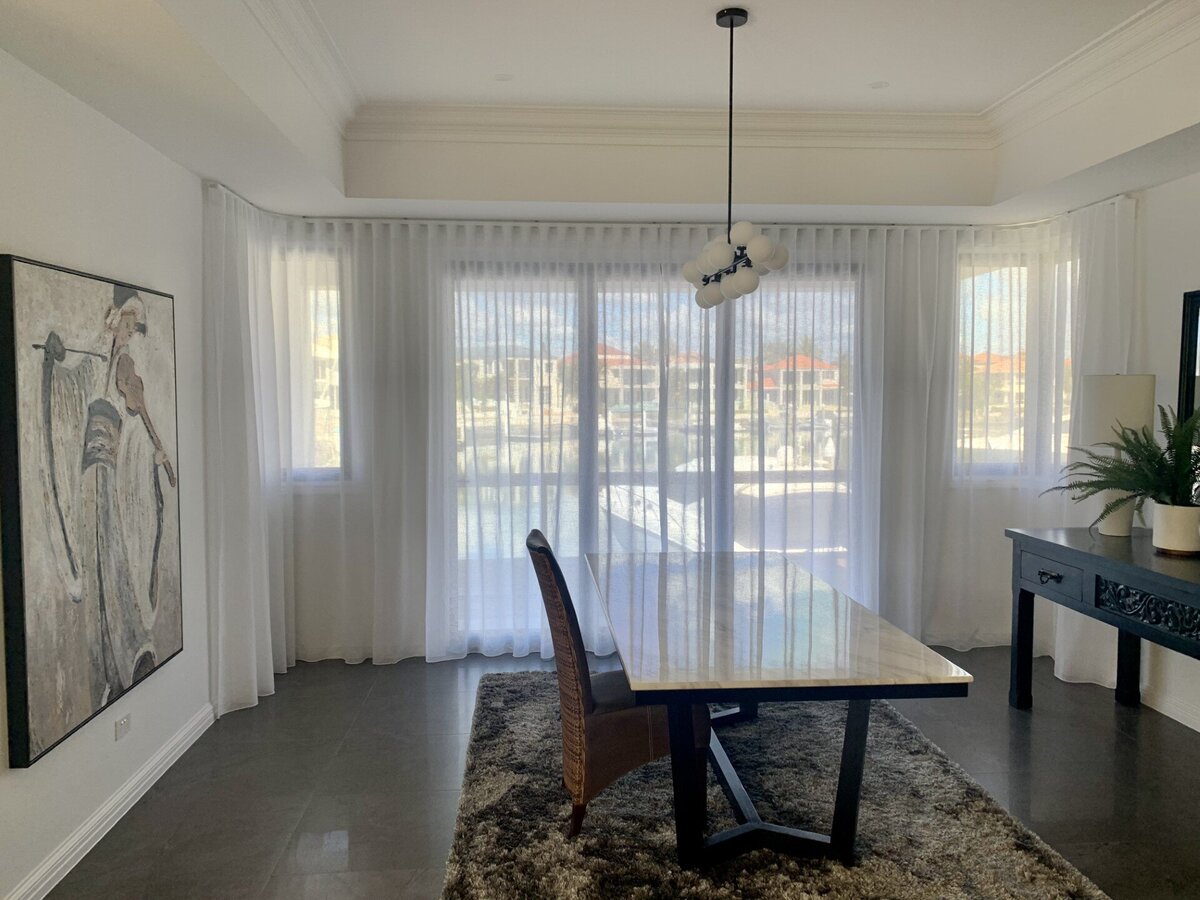Tips for Selecting Curtain Colours
April 16, 2025
Choosing the right curtain colours is a crucial aspect of interior design. Curtains do more than just provide privacy and block light; they contribute to the overall aesthetics of a room. Whether you’re looking to match your curtains with your existing décor or create a bold focal point, understanding how different shades and patterns affect a space is key. This guide will help you decide between plain or patterned curtains, whether to go darker or lighter than your walls, and how to complement your colour palette effectively.
Should Curtains Be Darker or Lighter Than Walls?
When selecting curtain colours, one of the biggest considerations is whether they should be darker or lighter than the walls. Both options have their advantages and drawbacks, depending on the size of the room, the amount of natural light, and the desired aesthetic. Below are the pros and cons of each choice to help you decide what works best for your space.
|
Curtain Shade |
Pros |
Cons |
|
Darker Curtains |
| |
|
Lighter Curtains |
|
The best approach is to complement your existing décor and consider the room’s function. If you’re going for a dramatic effect, opt for darker curtains; if you prefer a light and breezy atmosphere, lighter shades are the way to go.
Is It Better to Have Plain or Patterned Curtains?
Deciding between plain or patterned curtains depends on your design goals, room size, and the overall aesthetic you want to achieve.
- Plain Curtains: These are ideal for a minimalist or modern look. Solid-coloured curtains are versatile and timeless, making them easy to match with various furniture styles. If your walls already have a lot of texture or artwork, plain curtains can help balance the room without overwhelming the design.
- Patterned Curtains: If you want to create a focal point, patterned curtains are a great choice. They add visual interest and can tie together various elements in your décor. However, in small rooms, bold patterns can be overpowering, so it’s best to opt for subtle designs or cool colours to maintain a sense of space.
Consider the existing patterns in your space, such as those found in rugs, cushions, or wallpaper. If your décor is already busy, plain curtains will help keep the look cohesive. On the other hand, if the room lacks visual variety, patterned curtains can introduce texture and vibrancy.
Matching Your Curtains to Your Living Room’s Colour Palette
Your curtain colour should harmonise with your existing décor rather than clash with it. Here are some key factors to consider:
- Wall Colour: Curtains should complement rather than compete with your walls. If your walls are dark, opt for lighter curtains to avoid a heavy look. Conversely, for light walls, darker curtains can create a striking contrast. If you want a seamless blend, choose curtains in a shade slightly darker or lighter than the walls.
- Furniture and Accessories: When choosing curtain colours, consider the dominant hues in your furniture, cushions, and rugs. If your living room follows a neutral palette, curtains in warm earth tones or cool colours like blues and greens can add a refreshing touch.
- Room Size: Lighter curtains enhance the sense of space in small rooms, while darker curtains add warmth and cosiness to larger spaces. If you’re dealing with a compact living room, opt for soft shades like ivory, beige, or pastel tones.
- Natural Light: The amount of natural light in your living room affects how curtain colours appear. Lighter curtains allow more light filtering, keeping the space bright, whereas darker curtains absorb light, which may be beneficial for reducing glare in sunlit rooms.
Final Tips for Selecting the Right Curtain Colour
- Consider the Mood You Want to Create:
- Cool colours (like blue, green, or grey) create a calm and refreshing atmosphere.
- Warm tones (like red, orange, or gold) add vibrancy and warmth.
- Think About Long-Term Appeal:
- Neutral tones are timeless and work well with changing décor styles.
- Bold colours and patterns should complement your existing theme to avoid clashing.
- Factor in Maintenance:
- Darker curtains show less dirt and stains but can fade over time.
- Lighter curtains require more frequent cleaning but keep rooms looking fresh.
- Create a Focal Point if Needed:
- Patterned curtains can draw attention to the windows and enhance visual interest.
- If your décor is already busy, opt for solid-coloured curtains to maintain balance.
By carefully selecting your curtain colours, you can enhance your living space, create the desired mood, and complement your existing décor. Whether you choose plain or patterned, light or dark, the key is to ensure your curtains align with your overall interior design vision.
Selecting the perfect curtain colour is just one step towards creating a beautifully designed home. At Rivage Curtains and Blinds, we offer a stunning collection of high-quality curtains in a variety of shades, patterns, and styles to suit every interior. Whether you’re looking for light and airy drapes to brighten your space or rich, dark curtains to add depth and elegance, we have the perfect options for you. Contact us and let Rivage help you achieve the perfect balance of style and functionality in your home.

Rivage Curtains & Blinds. © 2024.
Privacy Policy | Sitemap | Terms and Conditions | Brand & Website by Olive St Studio.